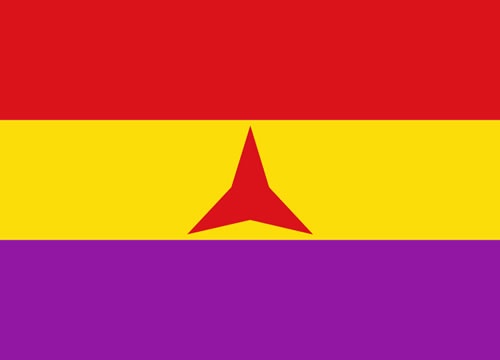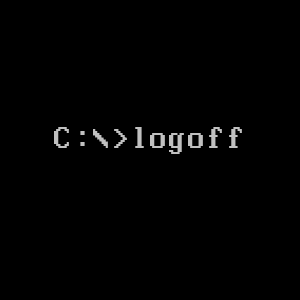https://www.catan.com/sites/default/files/2021-06/catan_base_rules_2020_200707.pdf
Catan, previously known as The Settlers of Catan or simply Settlers, is a multiplayer board game designed by Klaus Teuber.
Players take on the roles of settlers, each attempting to build and develop holdings while trading and acquiring resources. Players gain victory points as their settlements grow and the first to reach a set number of victory points, typically 10, wins.
The players in the game represent settlers establishing settlements on the fictional island of Catan. Players build settlements, cities, and roads to connect them as they settle the island.
The game board, which represents the island, is composed of hexagonal tiles (hexes) of different land types, which are laid out randomly at the beginning of each game.
In 2016, editions of the game were released with a conventional fixed layout board in this configuration, the hexes of which cannot be rearranged.
Players build by spending resources (wool, grain, lumber, brick, and ore) that are depicted by these resource cards; each land type, with the exception of the unproductive desert, produces a specific resource: hills produce brick, forests produce lumber, mountains produce ore, fields produce grain, and pastures produce wool.
On each player's turn, two six-sided dice are rolled to determine which hexes produce resources. Players with a settlement adjacent to a hex containing the number just rolled receive one card of the corresponding resource; cities produce two cards of the corresponding resource.
There is also a robber token, initially placed on the desert; if a player rolls 7, the robber must be moved to another hex, which will no longer produce resources until the robber is moved again.
That player may also steal a resource card from another player with a settlement or city adjacent to the robber's new placement. In addition, when a 7 is rolled, all players with 8 or more resource cards must discard their choice of half of their cards, rounded down.
On the player's turn, the player may spend resource cards to build roads or settlements, upgrade settlements to cities, or buy development cards.
Players can trade resource cards with each other; players may also trade off-island (in effect, with the non-player bank) at a ratio of four-to-one resources for one of any other.
By building settlements adjacent to ports, players may trade with the bank at three-to-one (three of any single resource type) or two-to-one (two of a specific resource) ratios, depending on the port's location.
Players score points for each settlement and city they have. Various other achievements, such as establishing the longest road and the largest army, grant a player additional victory points.
Resource cards can also be spent to buy a development card. There are three different types of development cards, including cards worth one victory point; knight cards, which allow the player to move the robber as if they had rolled a 7 (but without the remove-half rule); and the third set of cards which allow the player one of three abilities when played.
Catan will teach your children and teens unrealistic economic theories that will eventually doom this planet.
Children and teens playing Catan, will grow up thinking that when you use a commodity, it simply goes back into the existing reserves.
When your children play a game that treats natural resources like iron ore are renewable instead of finite resources, they may grow up into climate change deniers or believe pseudoscience like abiogenic oil. Or even worse, they might grow up into economists.
Catan also encourages competition for the limited resources of Catan instead of cooperation among all of the players. Your children and teens will be taught to steal resources from others, engage in hoarding and monopolistic behavior, and negotiate inequitable trade agreements, instead of trying to make Catan a better place for everyone.
Playing with an alternative set of rules seeks to address this. In order to more accurately model a closed system with finite resources, remove resource cards from the game as they are used during gameplay. Your children need to learn the consequences of the downward slope of Peak Brick on the transportation infrastructure of Catan while they are still young.
had me in the first half
Your children need to learn the consequences of the downward slope of Peak Brick on the transportation infrastructure of Catan while they are still young

Alternate Rules
(optional rules in [ ] parentehes)
-
Set up the game as usual with regards to hexagons and so on. The different colours can still be divided up for some of the alternative rules presented below, but this is not necessary.
-
Divide the resources into the following groups: replenishable, renewable, and limited. 2.1 The limited ones are those that, once used, will not come back naturally. This category includes only Ore. 2.2 The renewable ones are ones that, once used, will be replaced naturally, but which cannot be hurried, or would not naturally be renewed within one round (= one year). This category includes Clay and Wood. 2.3 The replenishable ones are those that, once used, will be replaced naturally or through human agency, and which can be “hurried” and thus be replaced within one round (= one year). This category includes Wool and Grain. 2.4 The Coin commodity is discarded after the revolution. Anywhere this commodity is used, it can be substituted for two Grain. [2.4.1 Alternatively, Ore produces Hammers and Sickles, which are represented by the Coins cards.] 2.5 The Paper and Cloth commodities work as before.
-
The game proceeds as normal for the first few rounds, with the following exceptions: 3.1 All proceeds from the dice roll are placed in a communal pile, from which anyone can take the resources that are needed. NOTE: not the resources “they need”; see below. 3.2 All roads are communal, meaning that anyone can build a settlement wherever this is allowed by the rules (i.e., not closer than two road-pieces from any other settlement or city). 3.3 Building of new roads, Settlements, improvements, or conversion of Settlements into Cities are allowed only when there is a consensus (3) between all players. That is, at the start of the round, all players (= the commune) discuss what the goals for the next X turns are (= planned gaming), and together seek to achieve these goals through rolling the dice. 3.4 Knights are now remodelled as Citizens’ Guards, but function as in the normal game with regards to the Robber. The three different size categories are disbanded, as no citizen is above another; as the knights cannot fight amongst themselves, the differences in size have no meaning anyway.
-
The resources and commodities function as follows: 4.1 Each Resource or Commodity card can be in one of four different states: Available (obtainable on a suitable roll, but not yet harvested by the commune), Harvested (obtained after a recent suitable roll), Obtainable (already used, but become Available after a set number of rounds), and Discarded (not available as the resource has been depleted. 4.2 Limited resources are exactly that. Once an Ore card has been used, it is placed in the Discarded pile, and thus out of the game. These must thus be spent wisely. [4.1.1 However, now veins may be found if, at the start of any subsequent round, any player who has a settlement or city of their colour bordering on a Mountain hexagon rolls a 12. The number of rolls are limited to one per player. The number of Ore cards that are placed in the Discarded pile are 1d6. Once a 12 has been rolled by a player, no further rolls are allowed for this round.] 4.3 Renewable resources, when used, are placed in the Obtainable pile, and will not be placed in the Available pile until 1d6 more rounds from when they were used. If the commune uses up two Clay in round 4, these are placed in the Obtainable pile, and not put back in Available pile until the beginning of round 4+1d6. This represents slow regrowth of mud flats and forests over time. 4.4 Replenishable resources, when used, are placed back in the Available pile immediately, and can be obtained during the same round. [4.4.1 Alternatively, and more realistically, Replenishable resourced need to be “seeded” before they become Available. This means that, apart from at the beginning of the game, when all cards are in the Available piles, all used Replenishable resources are placed in Obtainable piles, and will only be moved to their respective Available piles after the commune has paid 1 Grain/Wool for every field of Grain/Wool the commune borders. This represents the necessity of actively sowing Grains and breeding sheep before these can be harvested.] 4.5 Commodities are produced as normally, except that Ore does not produce any commodities [But see above!]. 4.6 Whether harbours can be used or not depends on if the Revolution has succeeded across the world or not. Decide this before the game starts. If it has, harbours work as normally, except that Ore in the Discarded pile will cost twice as much. If it has not, trade with the Capitalist world will only corrupt the Glorious Youth of the Revolution, and this can obviously not be permitted!
-
Special rules: 5.1 In case of an emergency, when no Citizens’ Guards can be moved to a field where the Robber is, a set number (say, three) of Grain [and one Hammer and Sickle, if this alternative is used] can be spent to temporarily convert a Settlement to a Guard for one round only. A City can likewise temporarily be converted to a Settlement and a Guard, or two Guards. Note that these converted Guards cannot be moved, and will not yield any resources for the remainder of the round, after which they are celebrated as the Heroes of the Revolution, and revert back to Settlements/Cities. 5.2 If the Paper is used to print Marx’ “Capital”, this can be used to: – instantly improve one Settlement into a City; – Instantly remove the robber from the board entirely (until the next time someone rolls a seven); – instantly harvest two resources of the commune’s choice. Note that due to the dignity and size of this book, a total of three Paper is needed to print this.
-
All points are scored communally, and all players either lose or win together. The goal is now to reach some preset total number of points, perhaps within a set amount of time.
Ooo, gonna have to try this. My group keeps cycling back to Catan and weird varient rules.
Derailed couple of games of Catan at the house by trying to establish the USSC and everyone else gets mad that cooperation and resource pooling isnt explicitly banned by the RAW.
-
Everyone keeps telling me to read Settlers but I already know the rules.






